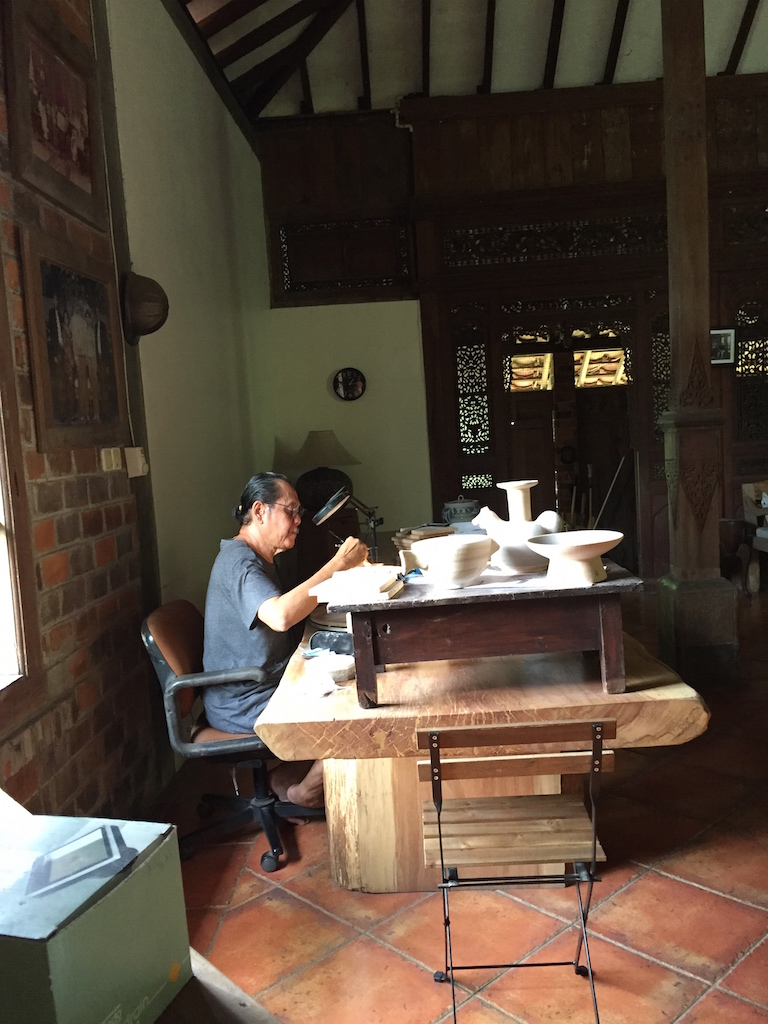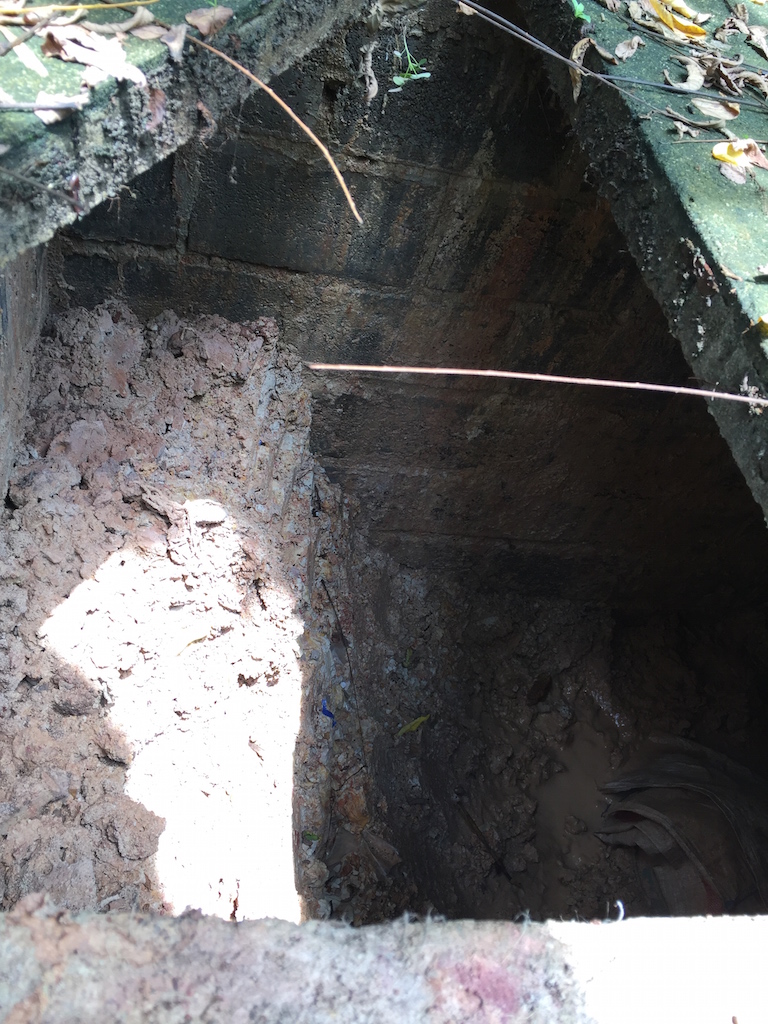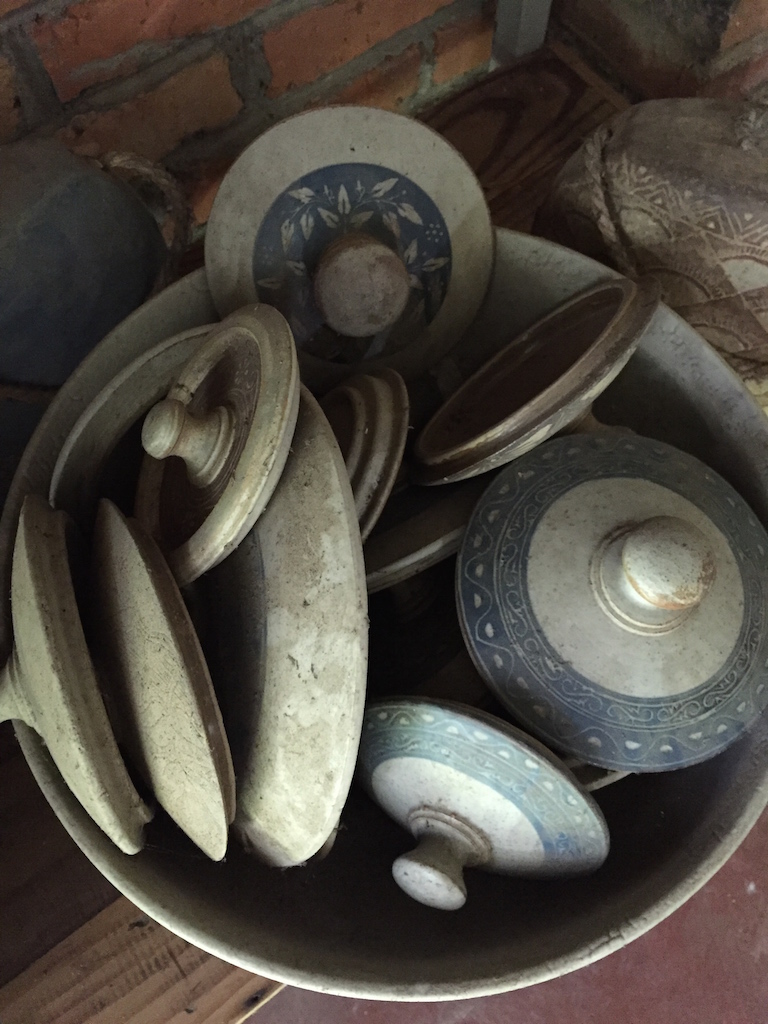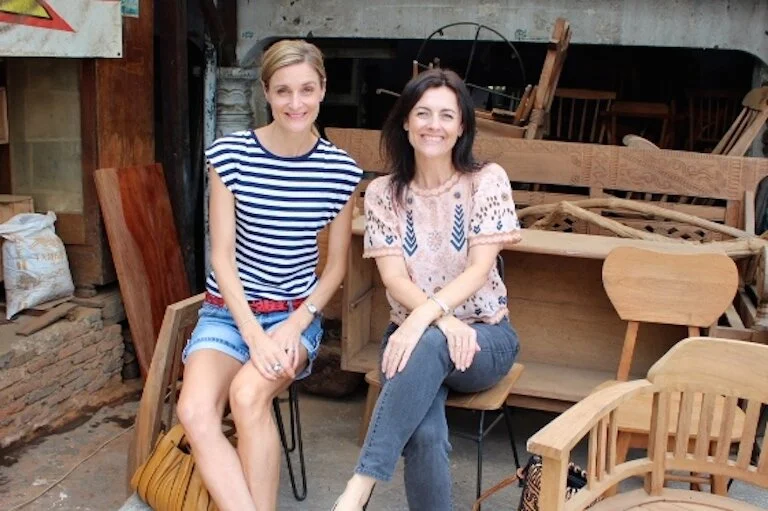Meet Bregas Harrimardoyo of Pekunden Pottery
Well before a journey bespoke was established, Liz and I had both noticed the ceramics of ‘Pekunden Pottery’. My first sighting of Pekunden pieces was at Dia-log-ue - a gallery and artspace in my neighbourhood of Kemang. Each time I visited the gallery, I would be drawn to the smooth and simple surfaces of each piece. In particular, I loved the authentic design and muted colour palate; unpretentious and beautiful. I then recognised Pekunden pottery in other places and started to wonder, ‘Who is responsible for these creations?
An example of the simple earthenware characteristics of the Pekunden style
Meanwhile Liz had visited an open house by Sharon Lumbantobing of The Artisan’s Table, which featured some examples of Pekunden Pottery (more information on 'The Artisan's Table can be found at the end of this post). Like me, the aesthetic resonated with Liz and it was when we decided to start our blog, and list possible ideas for stories, that we realised our shared love of Pekunden Pottery.
Recently I had the chance to meet Bregas Harrimardoyo, the creative individual behind Pekunden Pottery. I ventured out of town to meet Bregas (and his family) in his beautiful studio on the southern outskirts of Jakarta. Here is our interview.
*Kenalkan Bregas Harrimardoyo
Bregas with his son, Yuta
Hello Bregas, Thank you for welcoming me to your creative space. Can you tell us a bit about yourself.
I was born in Jakarta. Both my parents are from Semarang in Central Java. My family has a very strong sense of Javanese culture and Javanese values. I normally speak to my father, Harriadi in Javanese. We demonstrate the typical Javanese traits of calmness and a reluctance to become easily angered.
What’s in a name? - Why ‘Pekunden’?
There used to be a village in the centre of Semarang which was called ‘Pekunden’. My mother, Ating, was born there but due to urban development, Pekunden is no longer a discrete area but a part of Semarang city itself. The name 'Pekunden' comes from an old Javanese word, ‘kundi’ which means ‘pots’ or jars or vessels. My father was born nearby and he named the business ‘Pekunden’. His first handcrafted items were made from clay which he found in his own backyard in Semarang. When he decided to establish his own pottery studio, he named it Pekunden as a tribute to my mother.
The logo on the Pekunden card is a picture of the family's original home - a traditional Javanese 'joglo' house, which they relocated from Semerang on the north coast of Central Java to its current location in Depok, West Java
Can you tell us a bit about your background?
Basically at the age of five I started seeing my father work with clay, as he developed a keen interest in pottery around this time. His studio was like my playground so I watched the whole process from the beginning and my father would always encouraged me. I still have pieces that I made as a child.
Where did you learn your skills as a potter?
I learnt my skills from my father, who was mostly self-taught. Whilst we were living in Jakarta, my mother studied Batik at the Institute of Fine Arts (Institut Kesenian Jakarta / IKJ).
The Institute then offered a new class focusing on pottery which my mother started but found it too technical. Instead, my father took over her course enrolment and immediately a new passion was ignited. This became the turning point in his life as at that time he was working as a civil engineer. Using his engineering skills, my father built his first studio in our family garage (circa 1987) and even built his own kiln. As his emerging passion for pottery grew, my father started displaying his work in exhibitions, at art markets and it just kept on growing.
Bregas' father Pak Harriadi, working on a piece of pottery in the family's traditional 'joglo' home
Did you always want to be a potter?
In Junior High School my dad would always take me to pottery meetings with his pottery friends. These experiences had a lot of meaning to me and still do (I was 14 years old). Around 17 years of age I contemplated archeology as a potential career path as I love history and anything to do with culture, but when I graduated I realised I could explore this passion through pottery. I am now a full-time potter and craftsperson.
Are there any other artistic people in your family?
Within my nuclear family everyone is creative and artistic. My mum learned about Batik and she is currently enjoying the art of crochet. She also makes many of the shades for my lamp bases.
A selection of the lamp bases made by Bregas
Every day my dad is still busy with his artistic interests. On a daily basis he can be found drawing, carving out designs, applying sgrafitto* or providing advice to me when I need it.
Pak Harriadi continues to work on his craft each day
A large planter pot hand thrown and decorated by Bregas' father, Pak Harriadi
Bregas shows Yuta an ant-lion insect (it was my first sighting of one too..)
My brother is an architect so he too is artistic. My son Yuta is often with me in my workshop - his 'playground'. Yuta even looks for ‘antlion’, which make houses in the sandy floors of the workshop. I did the same in my dad's workshop. I guess it really is a matter of history repeating itself.
What is it about clay that you like?
The freedom to explore the texture; it’s a natural material with no harsh chemicals. Clay is also a medium full of character; you can form it, you can destroy it but if you fire it, it becomes something very solid.
A look inside one of the three kilns in Bregas' workshop
The unrefined 'raw' clay harvested from Sukabumi in West Java
Where do you source your materials from?
Our raw clay comes from Sukabumi in West Java. We have it delivered but before it arrives, we have to visit the site and learn about the details of its source. In general, we have enough clay stock for at least 6 years supply, allowing for consistency.
With regard to the glazes, we develop our own. Most ingredients for our glazes are local and often from nature (eg: bones or egg shells, wood ash and natural minerals).
Some of the glazes used to decorate Pekunden pottery
Bregas stirs the glaze, ensuring correct consistency
Again, we produce our own underglazes (engobe) onsite from clay and other natural minerals.
Canisters of 'engobe' - a white or coloured slip which is sometimes applied to improve the surface of an object, or to give a decorative effect
Examples of 'engobe' made using natural materials
Do you work alone or with others?
I have one helper who works with me. His name is Pak Elon. Park Elon’s role is basic forming and clay treatment (ie, processng the clay from raw clay to 'ready to use'). Of course, my father is always there as my mentor too.
Bregas' workshop
Are there any other artistic pursuits or hobbies that you enjoy?
Photography - but now it’s slightly to the side due to other acitivites that are taking up my time.
How would you describe your style?
I like my creations to be simple in shape as this will provide space to accommodate the pattern.
Simple form provides greater space for decoration
What pieces do you derive the most pleasure in making?
The kendi (traditional water jug) which is made from 4 different parts (2 parts in body, spout and neck). I enjoy the challenging technique that is required to make the kendi. I enjoy the ability to explore the shape of the kendi as we are now introducing different shapes to the body of the vessel, such as a fish.
Bregas working on a 'kendi' in one of his studios. Here the border between indoor and outdoor is blurred, creating a serene environment in which to create
This is the kendi that I bought and now graces my dining room (- unless it is being called upon to fulfil its function as a water jug)
What is your favourite piece?
The tumblers are my favourite due to their simplicity of shape and flexibility to explore the patterns. I also love the fact that they are functional pieces.
A selection of the many tumblers by Bregas. Which is your favourite?
With regard to life, what are you most proud of?
Definitely my family.
Bregas with his wife Nina and son, Yuta
Where do you seek your inspiration for your work?
Inspiration for my patterns often comes from nature but also from the traditional Indonesian patterns in fabric and bamboo weaving.The inspiration for the shapes of my teapots comes from Japanese design.
What does a ‘typical’ day look like for you?
It is mostly spent in the studio with my son. Often my day starts at around 0600 and I almost always finish my day drawing until 7/8pm. If we are firing, then I will need to stay close to the kiln as it requires checking on a half-hourly basis.
Do you have a favourite food?
My mum’s cooking. Fortunately my mum, Ating, lives very close by!
What about a favourite drink..?
Es kelapa muda - freshly picked from my garden with a dash of palm sugar. Unfortunately the squirrels also like young coconuts and sometimes when I pick the coconuts I find a hole gnawed out of it - I know the squirrels have gotten to it first…
The coconut palm that provides Bregas with his coconuts for Es Kelapa Muda
How can readers follow your work?
I have an instagram account which is good to follow if you are interested in the process of making
How can readers acquire your pieces?
I have some pieces in Alun Alun in Grand Indonesia as well as in some small galleries such as Dia-log-ue and Motif (Kekayuan)
3 words to describe Your Jakarta
Busy, Fun, Challenging
Where do you go when you need to chill out?
I just stay at home…
Are you reading anything in particular at the moment?
‘Kendi' by Sumarah Adhyatman - which is a part of my father’s collection from many years ago. It is all about the traditional water vessels. I am always reading technical books about pottery, design and interior architecture books - I love them.
Another example of a kendi made by Bregas
Advice to those who have just arrived in Jakarta?
Explore it. Don’t be afraid to get lost. Just explore.
Can you recommend any places to visit in Jakarta and surrounding areas?
Go to Bank Indonesia Museum in Kota Tua (next to Bank Mandiri museum) - also explore the area of Kota Tua itself.
What else are you up to right now?
I am currently working with The Museum of Fine Arts and Ceramics in Kota Tua. In late 2015 I was part of an exhibition at the Fine Arts and Ceramics Museum and the exhibition was designed to be as interactive as possible (ie, the exhibition included throwing, raku firing and sculpture workshops). With so many opporunitites to be ’hands-on’, it made the Museum feel more alive and it was a big success. That experience led to an idea to ‘activate’ the Museum. Coincidentally, I met some people who gave us this amazing support for our program and we ended up talking to the Museum officials during which time we presented our ideas for short-, mid- and long-term programs (addressing ideas such as types of workshops, types of exhibitions, improvements on the presentation of the Museum such as lighting and cleanliness etc). The Museum responded very positively. As a result, now the projects have started for the Museum and the first will be the Kendi Exhibition in May and at the same time, the activation of the multimedia room at the Museum will also take place.
Contact Bregas
Email: bregas@pekunden.or.id
Telephone : +62 816 98 3470
Member of Meet the Makers Indonesia (@mtmindonesia) organizing team
What is 'The Artisan's Table'?
The Artisan's Table was established by Sharon Lumbantobing, a former long-term resident of Jakarta. Recognising that a gap existed in the Jakarta marketplace for handmade utilitarian items, such as working baskets, wheel thrown ceramic tableware and natural dye textiles made by master craftspeople. Sharon was interested in seeking out master craftspeople who specialise in the entire production process of harvesting natural fibres, preparing natural dyes and weaving textiles and baskets. Moreover, she wanted to support artisans by creating a market for their wares outside of their village, and hopefully, attract a younger generation of artisans to develop these skills. Hence she established the cooperative group, The Artisan's Table which featured Bregas' pottery along with the wares of many other talented local creatives.
*Kenalkan - Let me introduce
*Sgrafitto - a technique involving the application of layers of plaster tinted in different colours to a surface of an unfired ceramic body. The surface is then scratched, revealing parts of the underlying layer
Words: Jo Stevens Photography: a journey bespoke































